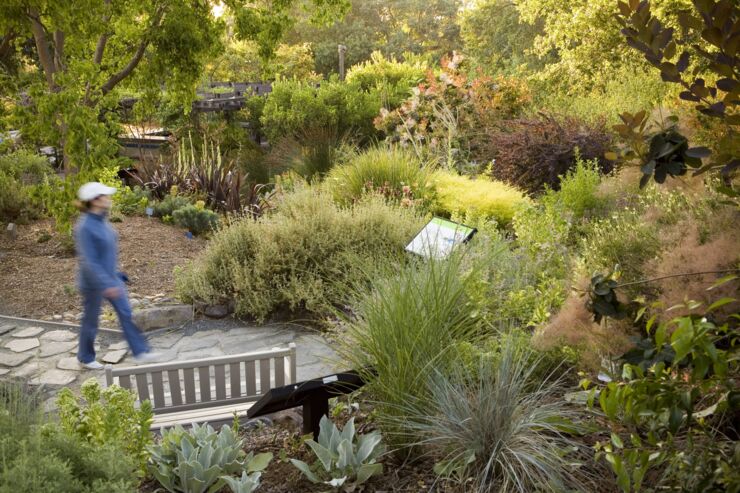
Save water, improve plant health, and lower watering costs by using these irrigation tips for HOA common areas, business parks, median strips, and other commercial landscapes.
- Repair broken/misdirected sprinklers, pipes, and fittings
- Check for clogged or leaking drip irrigation
- Check leaking or stuck irrigation valves
- Assess any unaddressed environmental factors
- Sloped lawns often do best with a "cycle and soak" approach to irrigation
-
Bioswales need to be closely monitored for clogged inlets/overflows, substrate condition and plant health
- With the irrigation controller (if present) in the winter "off" position, check the meter. Is the flow indicator (usually a blue circle or red triangle on the meter dial face) spinning?
- If yes, turn off the backflow. If the flow indicator is still spinning, there is a leak between the backflow and the meter
- Is the flow indicator (usually a blue circle or red triangle on the meter dial face) spinning?
- If yes, turn off the backflow. If the flow indicator is still spinning, there is a leak between the backflow and the meter
- In this case, work with a leak detection company to determine the exact location of the leak to minimize any needed trenching
- If, once the backflow is off, the flow indicator is not spinning, you have a leak in the pressurized main lines
- If the flow indicator on the meter is NOT spinning when the controller is in the "off" position, the leak could be occurring during the run times of the zones. Test zones one by one to narrow down where excessive flow may be happening.
More info on how to read your meter here.
These controllers adjust automatically throughout the year based on programming information from the landscape manager combined with the current weather. The controller uses information such as local weather history, plant type, soil type, and precipitation rates of the sprinklers. For more information on weather-based controller rebates, see Irrigation Programs.
- Review run times for different plant types: spray for lawns, drip/bubblers for trees/shrubs
- Ensure that the controller(s) on site are adjusted monthly to meet changing seasonal irrigation demands
- If your site has smart controller(s), review settings to ensure the information is accurate and reflects the current landscape conditions
- Multiple programs - Allows you to irrigate planting areas with differing water needs separately so lawns can be separated from established shrubs and groundcovers or newly planted areas.
- Multiple starts - Minimizes irrigation run-off by applying water at a rate the soil can accept, and keeps water at the root zone. Use 3-4 short run times to give soil time to accept the irrigation water being supplied.
- Water Budget Feature (% button) - Quickly adjusts sprinkler run times (+/-) during the irrigation season, reducing irrigation later in the summer when plant water needs begin to decrease.
- Schedule irrigation cycles to water deeply and less frequently. Longer irrigation cycles encourage deep rooting and increase soil moisture for all plants.
- Create a base schedule. The amount you water is set as a fixed setting (minutes, starts per day, and program number), determined by plant water needs and the type of sprinkler (spray, rotor, drip, etc.). Adjust for seasonal changes by adding or deleting water days or by using the % adjustment feature, using 100% for July, adjusting down through August and September (70%-90%), and removing watering days by October.
Check our watering guide for recommendations on run times based on irrigation type/time of year
Irrigation controller maps delineate what landscape area is controlled by what valve. Maps should indicate the type of irrigation (rotor, drip, bubblers, or spray). Laminate and store backup copies digitally.
EBMUD offers free water budgets to irrigation only accounts. A water budget is based on a customer's irrigated area and weather data specific to its location. Weather data is gathered using a statewide network of automated weather stations. More information here.
Replace your lawn with water-wise plants adapted to our climate and receive and EBMUD rebate.
Resources and tools
WaterSmart gardener
Inspiration to help create and maintain a water-efficient landscape for residential properties.
Conservation links
Organizations and resources promoting water conservation and sustainable landscaping.